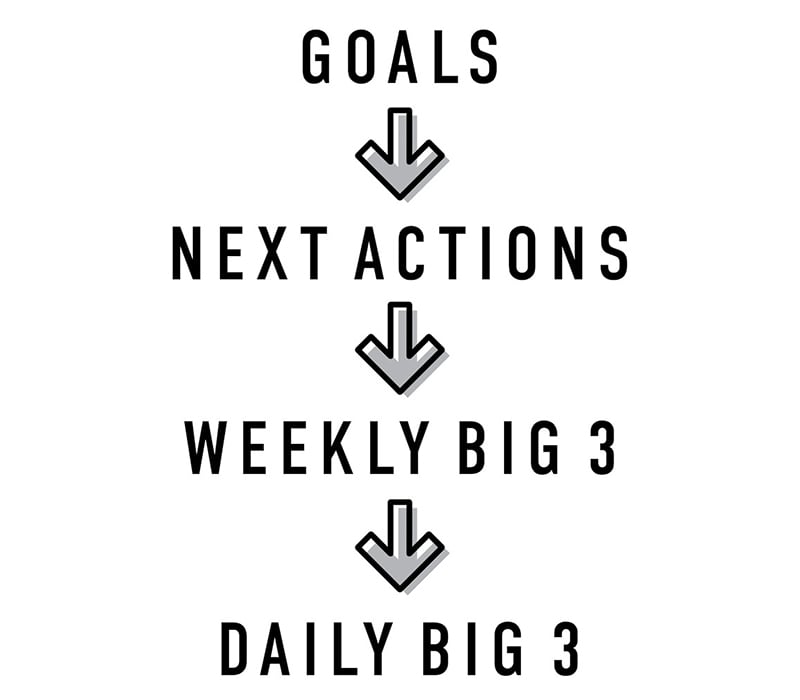A simple system of goal setting for life
During the pandemic lockdowns, I found myself with plenty of free time and very few options to spend it. I thought about all the projets I’d once wanted to pursue when I had time. Learning to play the guitar again. Restart a blog. Write. Reconnect with friends more regularly. Practice meditation. Start a journal. Well, now I had time. But I found it surprisingly hard to get going and to know where to start.
This is when I came across a helpful book, Your Best Year Ever: A 5-Step Plan for Achieving Your Most Important Goals by Michael Hyatt, January 2018. The book presents a system for setting goals. I’ve had the chance to read the book and start implementing its system. I’d like to share how I’ve tailored the book’s ideas to fit my needs.
Link to book:
The system
The system is based on defining cycles (periods of time) to set goals and to review progress. This is how I applied what I learned.
Step 1: Quarterly goals setting and review
Each quarter, I carve out about an hour do write down the following things in a diary (paper or electronic). The first quarter takes longer as you’ll be thinking more deeply about the ‘way’ of the goals. Over time, this process gets easier.
- Start by writing down the values you’re aspiring to live by as an individual. Thee values will correspond to the many roles you have in life and may have guided you in the past. As a member of a family and community, as a worker, as a volunteer and as a member of society. If you have them written down already, ponder them and tweak them to make them reflect who you wish to be. Keep these value present in your mind as you go through the next steps.
- List down your biggest wins and achievements from the past quarter
- How far did you get with each of your goals?
- Define 5-7 goals across each important domain of your life, such as family, physical and mental health, self-improvement, personal effectiveness, passions and interests. Think about goals that you can finish (like writing something, or creating something), or goals that are habits you want to develop and maintain. Make sure that your goals are sufficiently well defined. A rule of thumb is the acronym ‘SMARTER’, which stands for: Specific, Measurable, Actionable, Risky, Time-keyed, Exciting, Relevant. This is a way of designing goals that you can track and that are fun and challenging to pursue. For each goal, write down
- Your motivations for pursuing the goal and what you’d regret or miss if you didn’t pursue the goal
- What concrete steps you plan to take this quarter
- How you plan to celebrate once you achieve the goal. Celebration is very important to bring recognise you’ve achieved something that matter to you. It can be a material gift to yourself, a celebratory meal with family and friends or an activity that ‘marks the moment’
- At the end of the quarter, go through each goal and Rejoice, Recommit, Revise, Remove, Replace. This is the approach to refresh each goal and set up the goals for the next quarter.
Step 2: Weekly goal setting and review
On Saturday mornings, I carve out 30min to do the following write-up
- Scan my quarter goals, reading through my motivations to keep them in mind as I write the following points
- Review the past week:
- What were my biggest wins and accomplishments I’m proud of?
- How far did I get to on my goals?
- Thinking about my goals, what did I learn about what worked and didn’t work?
- What will I improve on, start doing, stop doing or keep doing?
- Plan the week ahead:
- What are the ‘Big 3’ outcomes I want to achieve next week?
Step 3: Daily goal setting and review
Each morning, I write down the following. I also spend a few minutes at the end of the day to capture how far I’ve gone with these goals that day (I’ve incorporated it as part of my daily journaling, which will be the subject of a separate post.
- What success do I want to achieve today (I visualise this success to make it real in my mind)
- Day’s start: What are the ‘Big 3’ steps I can take today towards my week’s goals?
- Day’s end: How far did I get to with my day’s goals?
The book includes an annual review, which I don’t do. I find the quarterly, weekly and daily system balances long term (aspirational and purpose driven) with short term (daily task oriented). Importantly, it’s manageable.
Looking back
If I take a step back to look at the last year I’ve practiced this system, here is what comes to mind. First, it has helped me focus on realising goals by keeping my motivations for pursuing them top of mind. So it combines long-term aspirations (the feeling I’m living ‘my purpose’) with short-term satisfaction of completing things. Second, I’ve enjoyed tweaking the system to fit around my life, so I can keep things fun and fresh. I’ve chosen an electronic journal that syncs between my smart phone and my laptop, so it’s easy for me to keep this habit alive wherever I am.
Further reading
The author has a website with plenty of tools to get going with the system, including the option to purchase hard copy diaries. While plenty of people love the diaries and the detailed tips and tricks, I prefer a much lighter touch approach to the system. I feel the one I’ve outlined preserves the essence of the system but takes far less time to keep up.





0 Comments
Trackbacks/Pingbacks